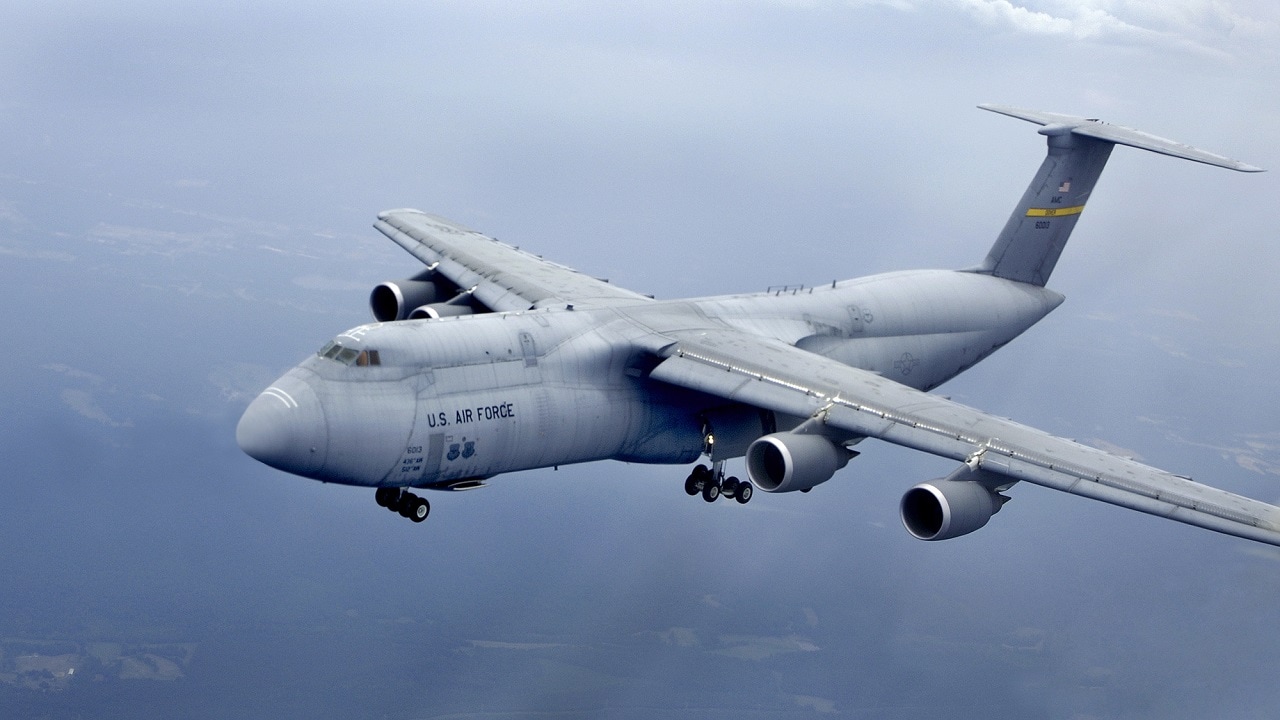The largest aircraft in the U.S. Air Force’s inventory is the Lockheed C-5 Super Galaxy. Indeed, the C-5 is one of the biggest aircraft in operation anywhere. The Super Galaxy is a behemoth, measuring 247 feet long and 65 feet tall. Its wingspan stretches 222 feet, and the total wing area occupies 6,200 square feet. The C-5’s great size allows the jet to conduct vital airlift operations around the world.
“We started to build the C-5 and wanted to build the biggest thing we could,” said Gen. Duane H. Cassidy, the former head of the Military Airlift Command. Yet in its early years, the C-5 program was a technical and fiscal disaster.
Engines of Revolution
In 1961, the U.S. military began considering replacements of aging cargo transports like the C-133 Cargomaster and the C-141 Starlifter. The older cargo jets couldn’t carry the U.S. Army’s outsized equipment, creating a substantial logistical hindrance for the world’s most adventurous military force.
In 1964, a request for proposals for a “Heavy Logistics System” was issued. Companies submitting bids included Martin Marietta, General Dynamics, Boeing, Lockheed, General Electric, Curtiss-Wright, Douglas, and Pratt & Whitney. Boeing, Douglas, and Lockheed were awarded one-year study contracts for airframes, while General Electric and Pratt & Whitney were awarded contracts for engine study.
Boeing, Douglas, and Lockheed all submitted proposals featuring swept wings plus rear and front cargo doors, which allowed for simultaneous loading and unloading. The Boeing and Douglas models featured conventional tail and rudder configurations. Lockheed’s design, however, featured a T-tail.
The Air Force preferred Boeing’s proposal. But Lockheed’s proposal was the cheapest, and it won. General Electric was awarded the engine contract for their design, the TF39. In the mid-1960s, the TF39 was revolutionary. All aircraft engines until then had a bypass ratio – that is, the ratio of oxygen v air entering the engine core – of two-to-one. The TF39, remarkably, had a bypass ratio of eight-to-one, the benefits of which included increased thrust and lower fuel consumption.
“Quite frankly, the C-5 program was a great contribution to commercial aviation. We’ll never get credit for it, but we incentivized that industry by developing the TF39 engine,” Cassidy said.
A Poorly Run Program
Despite the revolutionary engine, the C-5 program had serious problems at the outset. The C-5 was “one of the worst-run programs, ever, in its early years,” said aviation historian Robert F. Dorr. The new cargo jet was overweight, and it struggled with wing-cracking. As a result, it was beset with cost overruns. The problems were so significant and persistent that Congress investigated the C-5 in 1968. In fact, the C-5 is the first program in history to ever accumulate over $1 billion dollars in cost overruns – that’s $7.4 billion in today’s money. The overruns were so severe that Lockheed needed a government loan to stay afloat.
With time and money, the C-5 “has evolved very slowly and with great difficulty into a nearly adequate strategic airlifter that unfortunately needs in-flight refueling or a ground stop for even the most routine long-distance flights,” Dorr said.
The C-5 was introduced during the Vietnam War, where in a heartbreaking incident, a C-5 crashed while transporting more than 140 Vietnamese orphans. For the last half-century, the cargo transport has continuously aided in U.S. and U.S.-allied operations around the globe, with new variants improving on prior design flaws.
Harrison Kass is the Senior Defense Editor at 19FortyFive. An attorney, pilot, guitarist, and minor pro hockey player, he joined the US Air Force as a Pilot Trainee but was medically discharged. Harrison has degrees from Lake Forest College, the University of Oregon, and New York University. He lives in Oregon and listens to Dokken. Follow him on Twitter @harrison_kass.

